Introduction
Human beings have been using casks for over 2500 years now, to begin with primarily to store daily commodities like salt, pickled fish and gunpowder and increasingly now for maturing wines and spirits. It’s not precisely known though how the latter began. It could probably be the traders or men on ships bound for the colonies who found that storing the wines & spirits in these casks enhanced the characteristics of the stored liquid.
In the beverage industry every single element like the base ingredients, process, and material used contributes towards building the character of the beverage. In re to the aged spirits like whisky it is observed that ~60% of the character is acquired by the spirit during maturation and no wonder that casks are given an utmost priority. Though there are ~600 species of oak, majorly it’s the European oak (Quercus Robur) and American oak (Quercus Alba) which are used for ageing.
In this article, we turn the focus on how these casks are produced.
European oak Vs American oak
Quercus Robur aka European oak is a much faster growing variety and leads to a wide grain. The wide grain contributes with a well-developed complexity and character for the aged spirit. The tannins in the European oak are higher which contributes astringency for the spirits during early stages but over time lignin compounds break down slowly releasing the spicy, toffee and candied fruit notes.
On the other hand Quercus Alba aka American oak is a slower growing species of oak and has a tighter grain which results in sweet and delicate flavour compounds. American oak is high in lactones delivering the sweet notes like vanilla, coconut, butterscotch and fragrant notes. It is estimated that up to 97% of new casks used to mature Scotch whisky are currently made from Quercus Alba
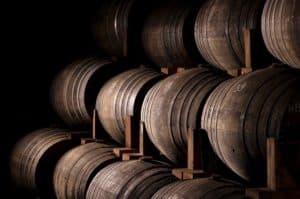
The type of oak, previous fill and the number of fills is considered while selecting the casks to age the new make spirit. While the ware house managers monitor the casks well-being and wonder about the share being discreetly sipped by angels, the master distillers await eagerly for the days to pass to experience the results of their efforts and handover the baton to master blenders to create their signature on the final blends.
Cask production:
Stage 1:
We need to wait almost 100 years before we can consider harvesting an oak tree. The timber is then cut down into smaller pieces without any defects to have a proper wood quality for staves production which will be used in building up a cask.
Less than 50% of the timber ends up in staves. The staves are further dried in air for months or in an electric kiln (to fasten the process) to acquire the required moisture level and to allow the chemical components to build up. The suitable staves are assembled in a Cooperage (place where casks are build/ repaired) and the craftsmen who perform these tasks are titled as coopers.
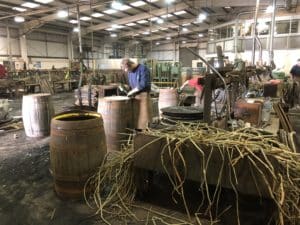
Stage 2:
At the cooperage, staves are assembled as per the cask size for ex: ~30 – 35 staves for an American Standard Barrel (ASB) and ~40- 45 staves for a Hogshead. The ends of the staves are bent by applying force using machines and steam. Iron hoops are placed later in order to lock them in shape.
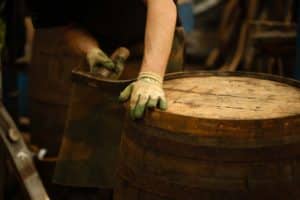
Stage 3:
In order to activate the chemical components of oak, the inner surface which gets in contact with the liquid is exposed to heat. This is done either by toasting or charring. This makes the surface more porous enabling the liquid to explore the inner areas of the wood. Toasting is done at 100 – 200’c for 15 – 45 minutes based on the requirement which is classified from light to heavy and activates vanillins (vanilla) and eugenols (spicy characteristics like cloves, cinnamon).
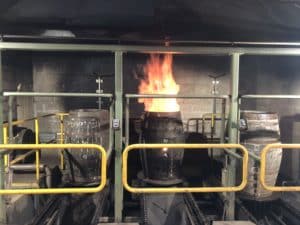
Charring is done at 250’c for 15 – 45 seconds. The charring levels are classified from light to thick (this is also called as alligator char) where in the inner surface cracks look like the skin of an alligator. Charring activates the Lactones (heavy & sweet notes) and hemicellulose (brown sugar, caramel & toffee notes). Water is sprayed to halt the fire and in both the cases the charcoal formed due to the wood being exposed to heat will also help in absorbing the unpleasant sulphur compounds during ageing.
Stage 4:
The cask now is fixed with permanent iron hoops at different levels, the head and bottom lid are fixed, a bung hole is drilled, it’s checked for leaks and then is ready for use.
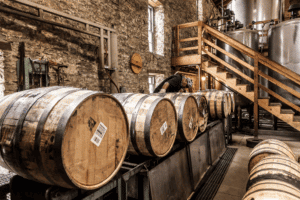
Madhu Rajigani

